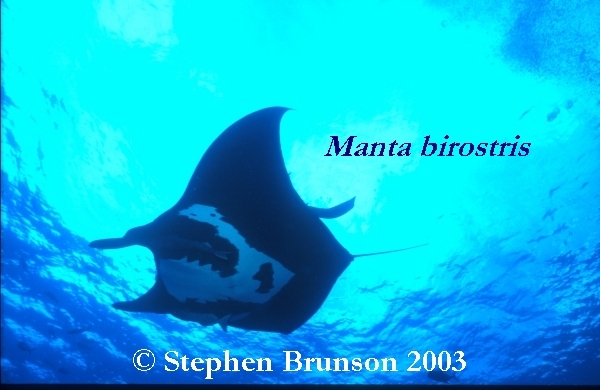








Manta Ray: Manta birostris
The manta ray has two gigantic fins on either side of its head. They resemble large, soft paddles and are used to channel food directly into its wide mouth. The manta has no teeth, its food is sucked, along with water, into its gill arches which act as a filter. Water is then pumped back out through the gills and the food is siphoned into its stomach. The manta's filtration system is used for feeding as well as respiration. The span of the manta's winglike fins can reach 22 ft. The wingspan of a Piper Cherokee plane is only slightly longer at 26 ft. The blue whale, basking shark, and whale shark have feeding systems similar to the Manta's. Manta Rays are found in western Atlantic, Pacific, and Indian Oceans in both inshore and offshore waters.

Print Number - MR003
Limited Edition signed color photography for sale by Stephen Brunson
Manta Ray, Manta birostris statistics:
Weight: Up to 3,000 lbs
Length: 10 - 16 Ft
WingSpan: 14 - 22 Ft
Mating Season: Year Round
Lifespan: Not Known
Typical Diet: Mainly shrimp and plankton; occasionally small fish, such as mullet.
Number of Young: One
Habits: Large specimens are Solitary.
Smaller fish may move in shoals of five or six rays
Related Species: Members of the Ray Family include the common eagle ray, Myliobatis aquila, spotted
eagle ray, Actobatus narinari and blunt nosed sting ray, Dasyatis sayii
BrunsonImages@att.net


















